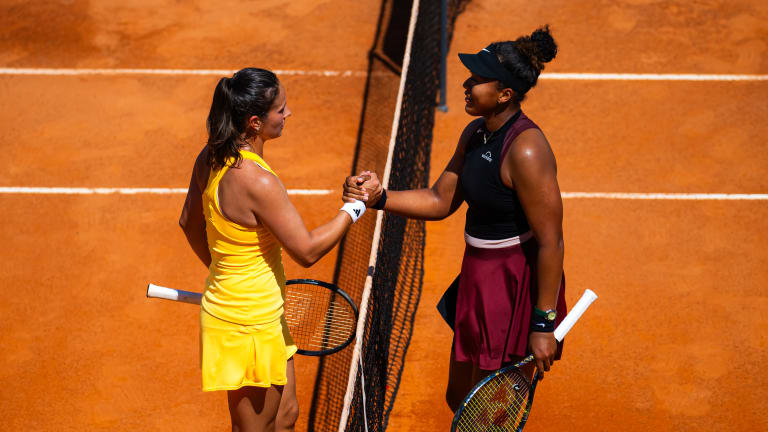Roland Garros
Naomi—or, “Clayomi”—Osaka: The Great Reset
By May 24, 2024Roland Garros
Rafael Nadal to be honored with 'exceptional' tribute on opening day of Roland Garros
By Apr 17, 2025Roland Garros
French Open organizers introduce draw to access ticket sales
By Jan 07, 2025Roland Garros
Coaches Corner: Juan Carlos Ferrero proves essential to Carlos Alcaraz's Roland Garros success
By Jun 14, 2024Roland Garros
What’s next for Novak and Nadal? Four ATP storylines after the Paris fortnight
By Jun 10, 2024Roland Garros
Naomi’s resurgence, Iga on grass: Four WTA storylines after the Paris fortnight
By Jun 10, 2024Roland Garros
Carlos Alcaraz becomes the clay-court champion that he—and we—always knew was possible
By Jun 09, 2024Roland Garros
Coco Gauff wins first Grand Slam doubles title with Katerina Siniakova in dream team debut
By Jun 09, 2024Roland Garros
Coco Gauff is a Grand Slam champion in singles and doubles, exceeding her own expectations
By Jun 09, 2024Roland Garros
From Rafa to Iga: as one owner of Roland Garros departs, a new one has moved in
By Jun 08, 2024Naomi—or, “Clayomi”—Osaka: The Great Reset
Roland Garros once broke Osaka. Now, the hard-court titan is learning to embrace its signature surface.
Published May 24, 2024
Advertising
![“I'm just really excited to learn more about [the] clay-court [game] and develop and go to play in Paris,” Osaka said in Rome.](https://images.tennis.com/image/private/t_16-9_768/f_auto/tenniscom-prd/fxvpyulmnmgqzj9cvfy3.jpg)
“I'm just really excited to learn more about [the] clay-court [game] and develop and go to play in Paris,” Osaka said in Rome.
© Getty Images
Advertising
Advertising

Kasatkina and Osaka met for clay-court practice; Daria afforded Naomi just two games. Then they met on the match court, and the tables were turned.
© 2024 Robert Prange
Advertising

Coco goes couture in new Miu Miu kit
The 21-year-old is taking tennis fashion to a new level.